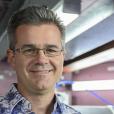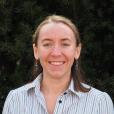Radiation Consultancy and Safety
ANSTO provides trusted advice, training and consultancy services to Australia’s resource sector.

Showing 241 - 260 of 331 results
ANSTO provides trusted advice, training and consultancy services to Australia’s resource sector.
Stable, highly conductive 2D nanosheets of boron nitride promising new material.
Spatz neutron reflectometer becomes 15th neutron scattering instrument that is used for studies of biological materials and other soft matter.

Year 11 STEM student and aspiring physicist was given the opportunity of a lifetime to tour ANSTO’s Lucas Heights campus and meet some of Australia’s top researchers.
ANSTO shared plans for an Innovation Precinct in southern Sydney at a breakfast event.

Dr Joseph Bevitt is a senior instrument scientist on the Dingo radiograph/tomography/imaging station, and scientific coordinator for the Australian Centre for Neutron Scattering.
ANSTO and the National University of Singapore have signed an agreement to enable Singapore researchers to access ANSTO’s state-of-the-art beamline facilities at the Australian Synchrotron.

In 2017, ANSTO's CEO signed a Memorandum of Understanding with Sri Lanka to work together to investigate the epidemiology of Chronic Kidney Disease of unknown origin (CKDu).
The ANSTO Science Series is a live and virtual meet-up that focuses on the key capacities of ANSTO’s people, partners and facilities and how they are meeting global challenges in sustainable industries, medicine, advanced manufacturing and in accelerating small business.
Neutron and gamma ghost imaging are important scientific developments reported in two publications, and the subject of an Australian Research Council Discovery Project grant awarded to a team that includes ANSTO scientists
Understanding of micro-structure gained using X-ray scattering and spectroscopy.
ANSTO showcased its significant contribution to security, safety, and public health during a visit of the Director-General of the International Atomic Energy Agency (IAEA) Rafael Grossi, Minister for Industry and Science Ed Husic, Australian Ambassador to Austria Richard Sinclair and Ambassador for Arms Control and Counter-Proliferation Ian Biggs and other dignitaries at the weekend.


ANSTO has a full suite of mineralogical, chemical and hydrometallurgical facilities from laboratory through to pilot scale.
ANSTO is a registered Research Service Provider (RSP), registration number 12657, under section 29A of the Industry Research and Development Act 1986.